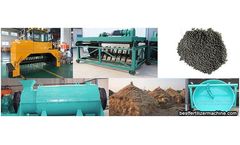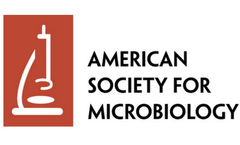Aphids Articles & Analysis: Older
21 articles found
Thrips, ah. the little insects that can pose annoying issues for cannabis cultivation. Thrips are minuscule, elongated insects that feed on cannabis plants’ sap, resulting in discolouration, crooked development, and decreased yields. But chill, fellow growers! It is possible to effectively prevent and treat thrips damage with the correct information and methods. The impact of thrips on ...
Hey there, fellow cannabis growers! Need to know how to fix root rot? Look no further! Welcome to our guide on fixing root rot and ensuring the health and vitality of your precious cannabis plants. We all know how disheartening it can be to see your plants suffer, but fear not! In this article, we’ll dive deep into understanding root rot, identifying its signs, implementing prevention ...
One of the most common pests to plague our grow rooms are the white aphid. Secondary to those are black aphids, which are very similar. If you’ve not experienced an aphid attack yet then count yourself lucky. There is no surefire way to keep your plants safe from white aphids. But there are many ways you can prevent white ...
As a cannabis grower, you will hopefully be aware of the importance of maintaining strong, healthy plants. However, one little pest, the infamous Russet Mite, can seriously harm your crop. These minuscule bugs can significantly damage your cannabis plants, resulting in lower yields or even crop loss. But fear not—you can effectively prevent and treat russet mites if you have the correct ...
Mealybugs are small but mighty pests that can settle on your plants. If left untreated, they can spell disaster! Nobody wants that now do they!? As with many aspects of growing plants, pest prevention is a great way to minimise the likelihood of infestations. In turn, this saves wasting time and resources treating mealybug populations in your grow space. Although mealybugs can affect outdoor ...
Alarm pheromones When an individual of a certain species is attacked by an enemy, it can send out a special chemical signal substance, so that after the partner gets the signal, it can cause alertness or escape. When aphids are attacked by predators, trace chemicals are released from the abdominal tube to warn companions to leave. ...
The crop straw organic fertilizer production line is advanced composting fermentation process, inoculates high-speed and high-efficiency fermentation bacteria, which makes the straw cellulose rapidly decompose and transform, and all kinds of pathogenic bacteria, weed seeds and aphid eggs are killed, and produce the bio-organic fertilizers with strong stability and full range of ...
EPA also has been granting emergency exemptions for sulfoxaflor since 2012, with the most recent emergency exemptions granted on June 17, 2019, for the use of sulfoxaflor to control tarnished plant bugs on cotton in 12 states, and to control sugarcane aphids on sorghum in 14 states. In the July 12, 2019, decision adding new uses, restoring previous uses, and removing certain ...
Background Chlorpyrifos was introduced in 1965 by Dow Chemical Company, and has been used as a pesticide for both food and non-food purposes to control pests such as aphids, armyworms, beetles and various types of mites. It is sold under many brand names including Lorsban, Andersons Golf Products, Eraser, Warhawk, Duraguard, Cheminova, Drexel, and Helena Chemical. ...
Russian wheat aphid (RWA; Diuraphis noxia Kurdjumov) infestations of barley (Hordeum vulgare L.) have reduced yield and quality in the United States since 1986. ...
Highest peak soybean aphid populations were 21,626 aphids plant–1 for infestations starting at V5, and 6446 aphids plant–1 for infestations starting at R2. Highest maximum aphid-days plant–1 recorded were 537,217 for V5-introduced soybean aphids and 148,609 aphid-days plant–1 for R2-introduced ...
The soybean aphid (Aphis glycines Matsumura) is a new invasive soybean [Glycine max (L.) Merr.] insect pest first identified in North America in 2000. A major aphid resistance gene Rag1 was identified and mapped from the maturity group VIII cultivar Dowling, and the gene has been introgressed into Midwest-adapted germplasm. ...
Highest peak soybean aphid populations were 21,626 aphids plant–1 for infestations starting at V5, and 6446 aphids plant–1 for infestations starting at R2. Highest maximum aphid-days plant–1 recorded were 537,217 for V5-introduced soybean aphids and 148,609 aphid-days plant–1 for R2-introduced ...
The soybean aphid (Aphis glycines Matsumura) is a major soybean [Glycine max (L.) ...
The lysogenic bacteriophage APSE infects 'Candidatus Hamiltonella defensa,' a facultative endosymbiont of aphids and other sap-feeding insects. This endosymbiont has established a beneficial association with aphids, increasing survivorship following attack by parasitoid wasps. ...
Burning had a significant albeit variable impact on abundance of alfalfa plant bugs, lygus bugs, aphids, and leafhoppers but not on abundance of alfalfa weevil. The lack of effectiveness of the burning treatments on forage yield and adverse environmental consequences of burning such as air pollution, hazardous loss of visibility during burning operations, and loss of crop cover ...
In 2003, initial infestation rates of 10, 50, or 100 aphids plant–1 applied at V5 resulted in population peaks of 21,000, 18,000, and 12,000 aphids plant–1 and maximum cumulative aphid-days of 381,000, 327,000, and 242,000, respectively. In 2004, initial infestation rates of 1, 3, 10, 50, or 100 aphids plant–1 applied at V5 ...
The text adopted the idea to add different compound additives to the anaerobic fermentation slurry, and carried on experiment research about the result of the anaerobic fermentation slurry to kill aphides. Finally it indicated that the five kinds of the compound additives selected in this text were able to enhance the effect to kill aphides when they were put ...
Because of the great interest in aphid responses to coloured targets from an evolutionary, ecological and applied perspective, there is a substantial need to expand these studies to more species of aphids, and to quantify spectral properties of stimuli rigorously. ...
To study importance of often ignored environmental effects on these associations, we performed a greenhouse experiment to examine the significance of endophyte infection and nutrient availability for bird-cherry aphid (Rhopalosiphum padi) performance on meadow fescue (Lolium pratense). Naturally endophyte-infected (E+), uninfected (E–), or manipulatively endophyte-free (ME–) ...









